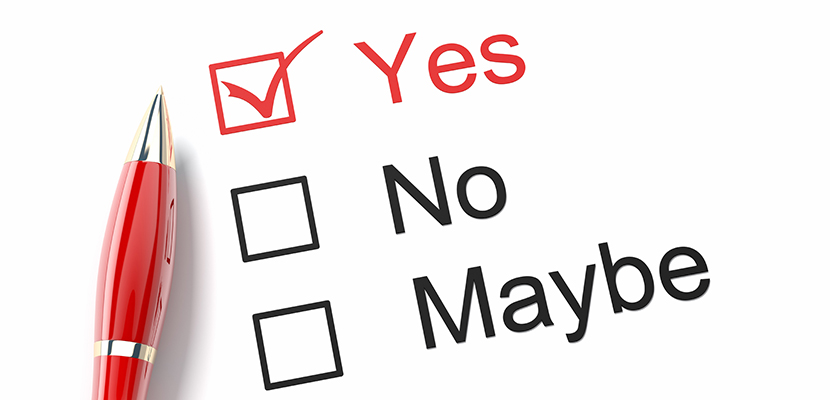
Photo Credit: iStock.com/Artist's hh5800
According to data compiled about the use of online surveys, two kinds of questions yielded the most actionable data – the use of dichotomous styled Yes or No questions vs. the use of Likert scale system for certain questions. Both of them with their own particular uses in a survey.
The idea of surveys is to get conclusive answers from your target demographic for many purposes – social, business, personal, academic to state a few. Survey creators online have the added benefit of web-only features such as drop down menus & check boxes to expedite the process of filling out that survey as well.
In light of all this, one basic truth about surveys has endured since they were first formulated. Questions structured to a yes/no format or utilizing the scales system happened to be the most conclusive barometers for how a person undertaking a survey understands the question.
Let us take a look at how both question formats stack up against each other:
Fine your customers like your service. Do they:
a) Really like it? – 5 Stars
b) Just like it? – 4 Stars
c) Like it? – 3 Stars
d) Ok-Like it? – 2 Stars
e) Nah – 1 Star
This is just an example of the scale-type question that’s used on surveys where the data needs to be accompanied by a qualitative and quantifiable value both. Mostly they are used in a business-oriented or academic survey, where it is important to know how much a person likes a newly introduced product or course, respectively.
Yes/No styled questions are best for purposes where ambiguity is the enemy. The respondent can take advantage of such close-ended questions in order to arrive at their conclusions quickly and efficiently. Mostly surveyors have reported success with these types of yes/no questions since it is easier to answer on part of the respondents. Basically these types of questions don’t waste anyone’s time in arriving at its conclusions.
Suppose you’re trying to distinguish between people who purchased your product and those who didn’t. By including a simple yes/no question at the start, you can quickly filter out the ‘No’ responses, saving valuable time. Similarly, when searching for an IELTS class near you, having clear filters or questions can help you eliminate irrelevant options, ensuring you focus only on what matters most to your needs.
The survey creator must have a clear-cut understanding of the topic they are taking a survey on, so that finding an answer to their problem isn’t a herculean undertaking. Most surveys work because they get the magic formula right – asking better questions from their respondents.
However, there’s always the risk that close-ended questionnaires may not provide sufficient answers to their intended recipients. Risks posed by such close-ended styled surveys can only be countered by an open-ended survey that makes the survey taker think of an answer.
But then again, opting for open-ended ‘What do you think of this-or-that?’ styled questions is bound to open up its own can of worms for the surveyors.
Kelvin Stiles is a tech enthusiast and works as a marketing consultant at SurveyCrest – FREE online survey software and publishing tools for academic and business use. He is also an avid blogger and a comic book fanatic.